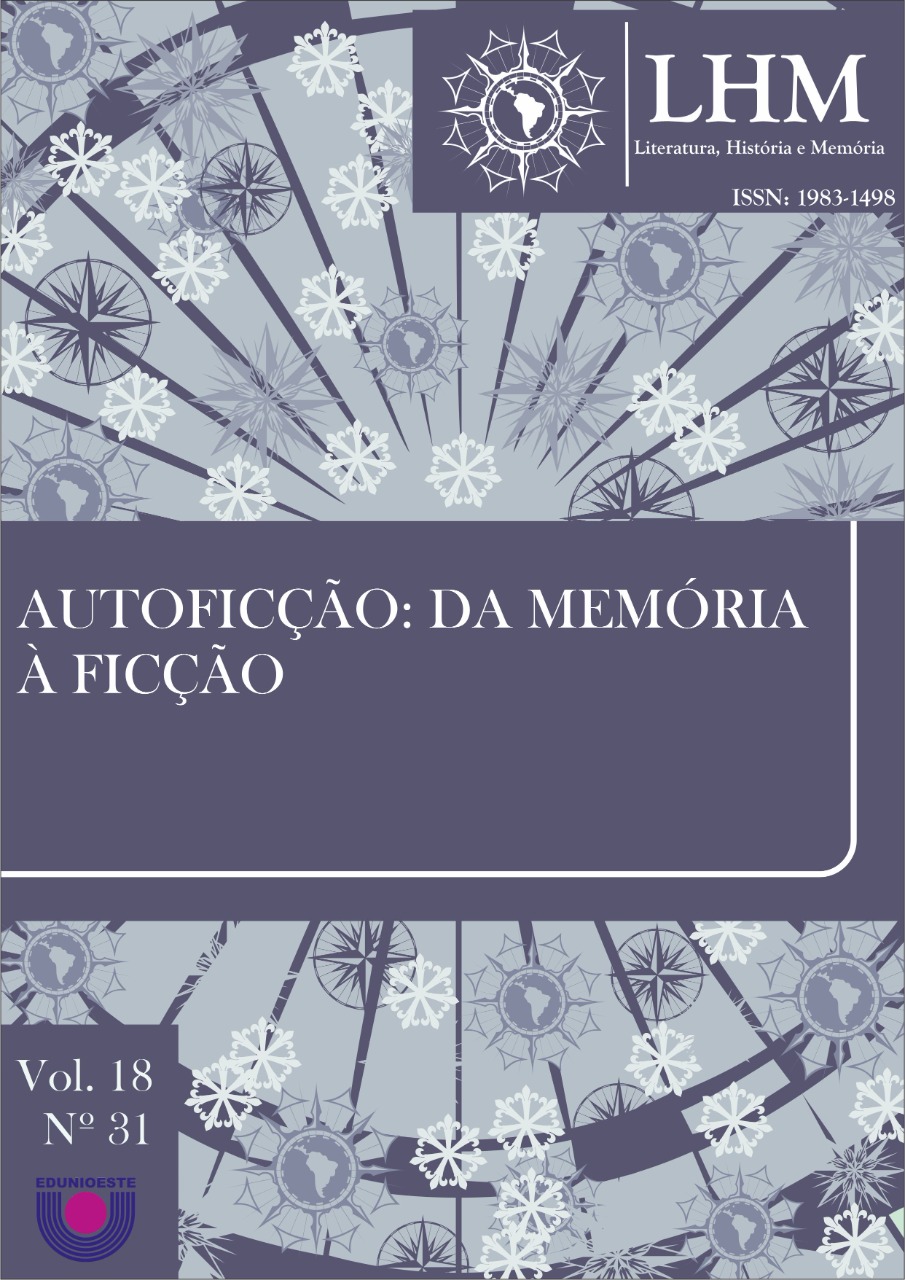The ethosthrough homonymy
the Barranquilla group and the author-character in One Hundred Years of Solitudeand Living to Tell it
DOI:
https://doi.org/10.48075/rlhm.v18i31.27811Keywords:
Ethos, Homonímia, Gabriel García Márquez.Abstract
This article aims to analyze the ethosof the characters Germán, Alfonso, Álvaro and Gabriel, from the fictional work One Hundred Years of Solitude(MÁRQUEZ, 2009), homonyms of the group of Barranquilla intellectuals quoted in the autobiography Living to Tell it(MÁRQUEZ, 2003): Germán Vargas, Alfonso Fuenmayor, Álvaro Cepeda Samudio and Gabriel García Márquez, whose social behavior is summarized by the fiction. For this purpose, a theoretical-analytical bridge is proposed between specific categories of two areas of knowledge: discursive ethos, from Rhetoric; and homonymy and onomatomancy, from Onomastics. In this study, homonymy and onomatomancy wereconsidered as cooperative agents for the construction of certain fictional ethé. Through the comparison of the construction of homonyms present in the fictional work and in Márquez’s autobiography, it was possible to associate the identities of the characters with the real entities (according to Márquez’s perspective), and to explain the imagetic and argumentative link present in the homonymic and onomatomantic phenomena. It is also possible to outline the identity-psychological perspective of such phenomena, mainly from the underground memory of La masacre de las bananeras, shared by the fictional entity -Gabriel -and the author-Gabriel García Márquez.
Downloads
Published
How to Cite
Issue
Section
License
Copyright (c) 2022 Revista de Literatura, História e Memória

This work is licensed under a Creative Commons Attribution-NonCommercial-ShareAlike 4.0 International License.
Aviso de Direito Autoral Creative Commons
Política para Periódicos de Acesso Livre
Autores que publicam nesta revista concordam com os seguintes termos:
1. Autores mantém os direitos autorais e concedem à revista o direito de primeira publicação, com o trabalho simultaneamente licenciado sob a Licença Creative Commons Attribution que permite o compartilhamento do trabalho com reconhecimento da autoria e publicação inicial nesta revista.2. Autores têm autorização para assumir contratos adicionais separadamente, para distribuição não-exclusiva da versão do trabalho publicada nesta revista (ex.: publicar em repositório institucional ou como capítulo de livro), com reconhecimento de autoria e publicação inicial nesta revista.
3. Autores têm permissão e são estimulados a publicar e distribuir seu trabalho online (ex.: em repositórios institucionais ou na sua página pessoal) a qualquer ponto antes ou durante o processo editorial, já que isso pode gerar alterações produtivas, bem como aumentar o impacto e a citação do trabalho publicado (Veja O Efeito do Acesso Livre).
Licença Creative Commons
Esta obra está licenciada com uma Licença Creative Commons Atribuição-NãoComercial-CompartilhaIgual 4.0 Internacional, o que permite compartilhar, copiar, distribuir, exibir, reproduzir, a totalidade ou partes desde que não tenha objetivo comercial e sejam citados os autores e a fonte.


